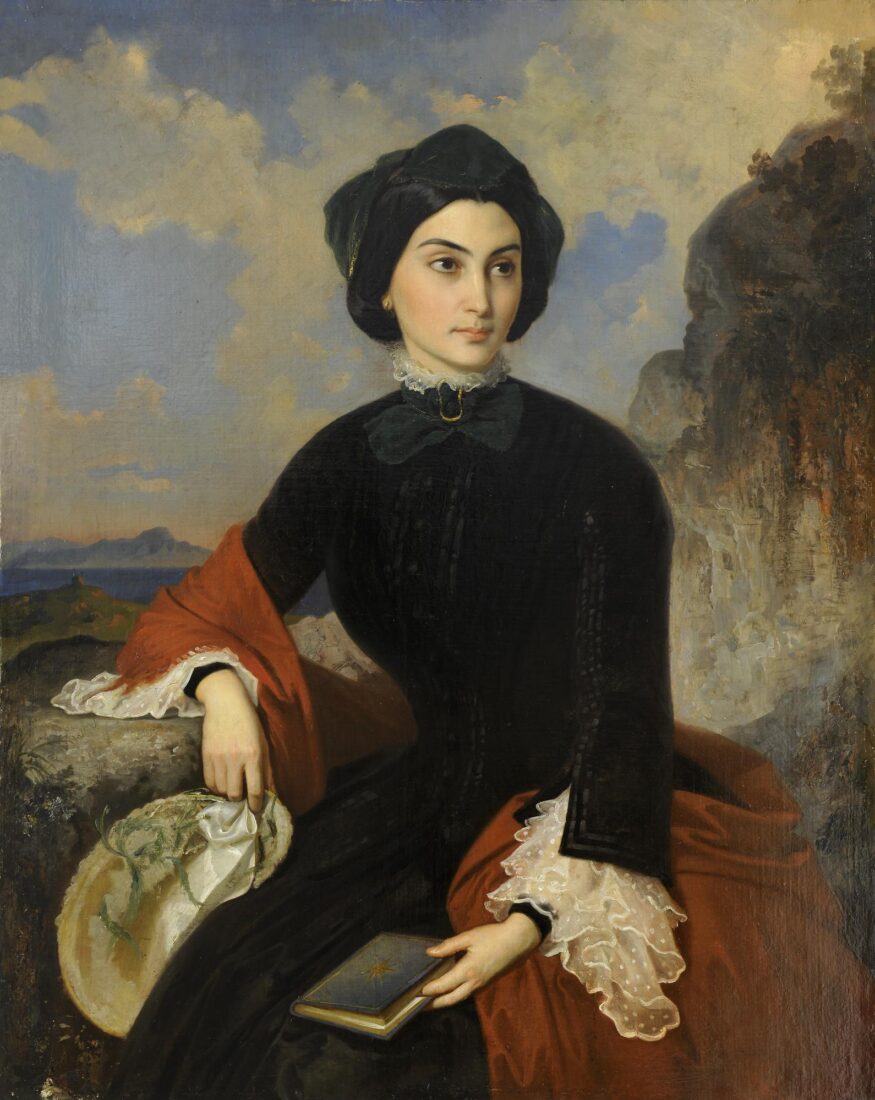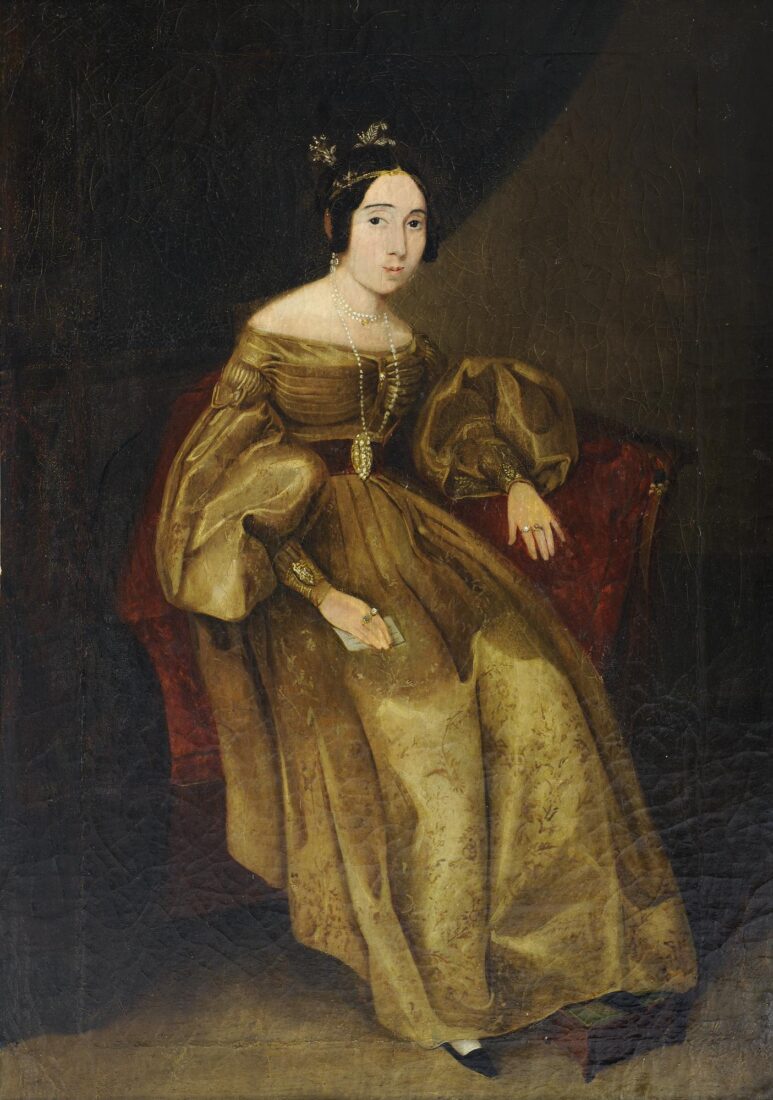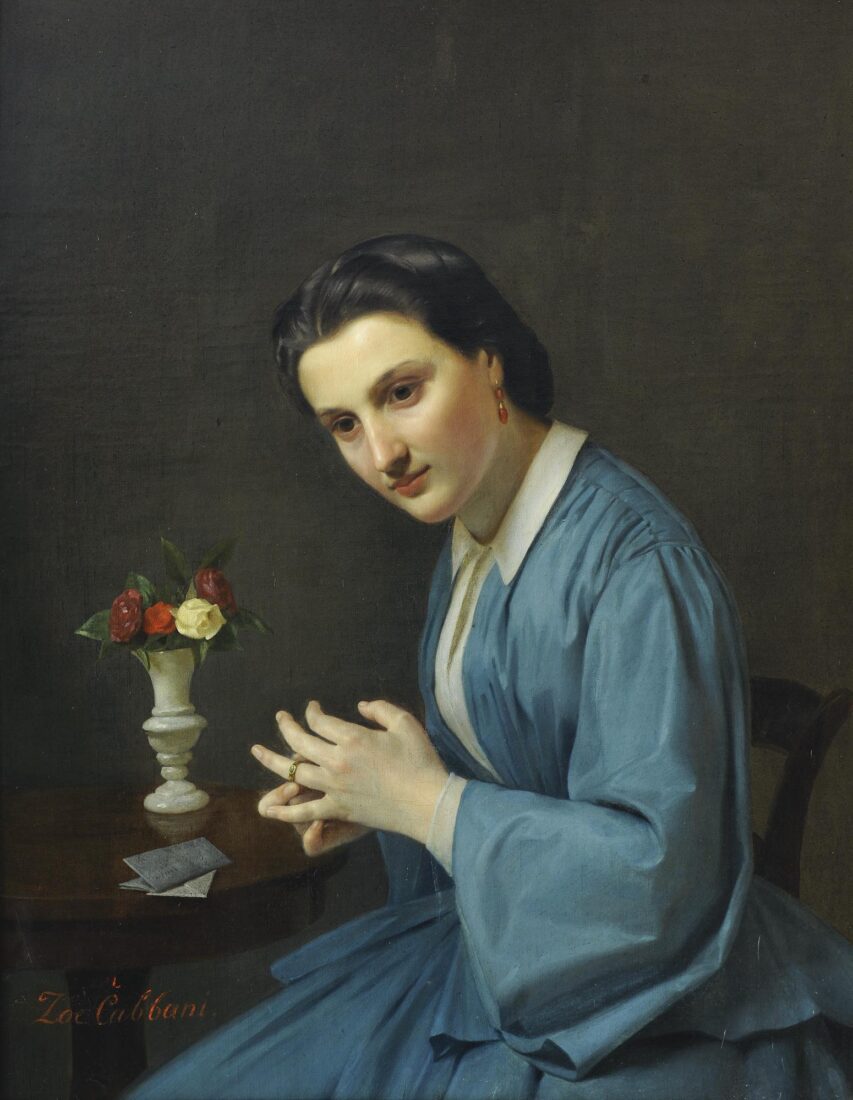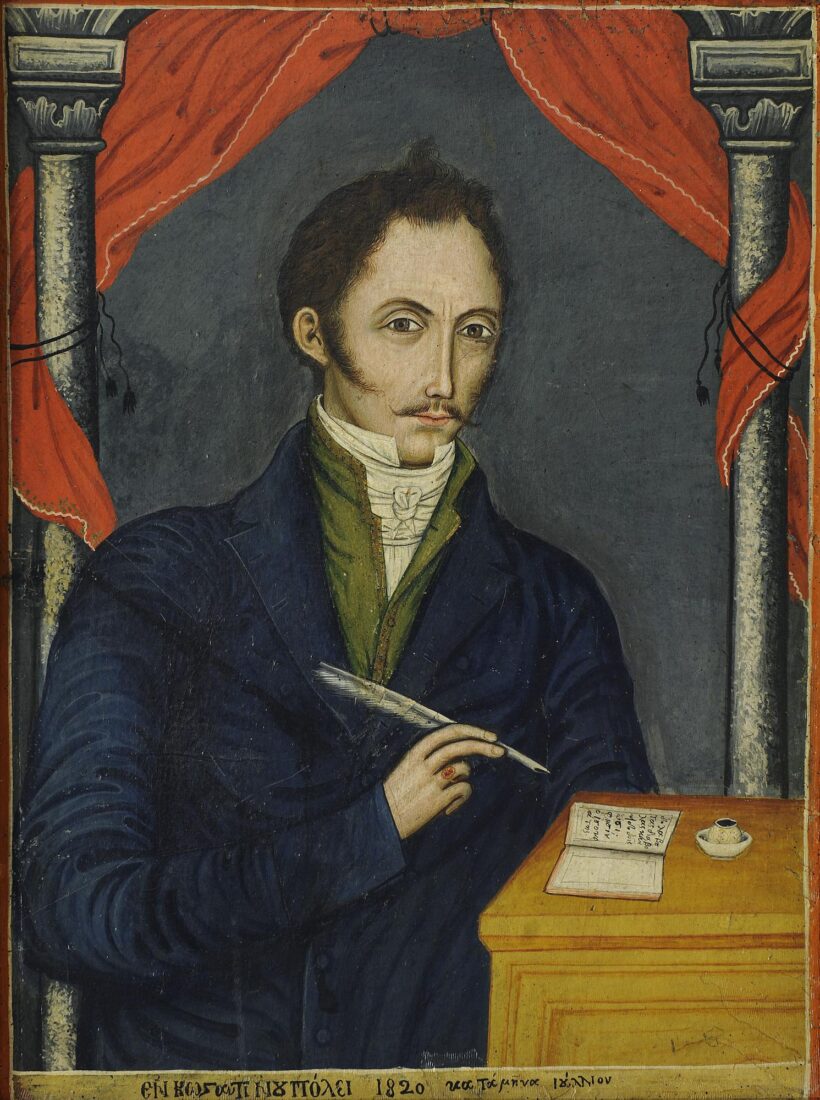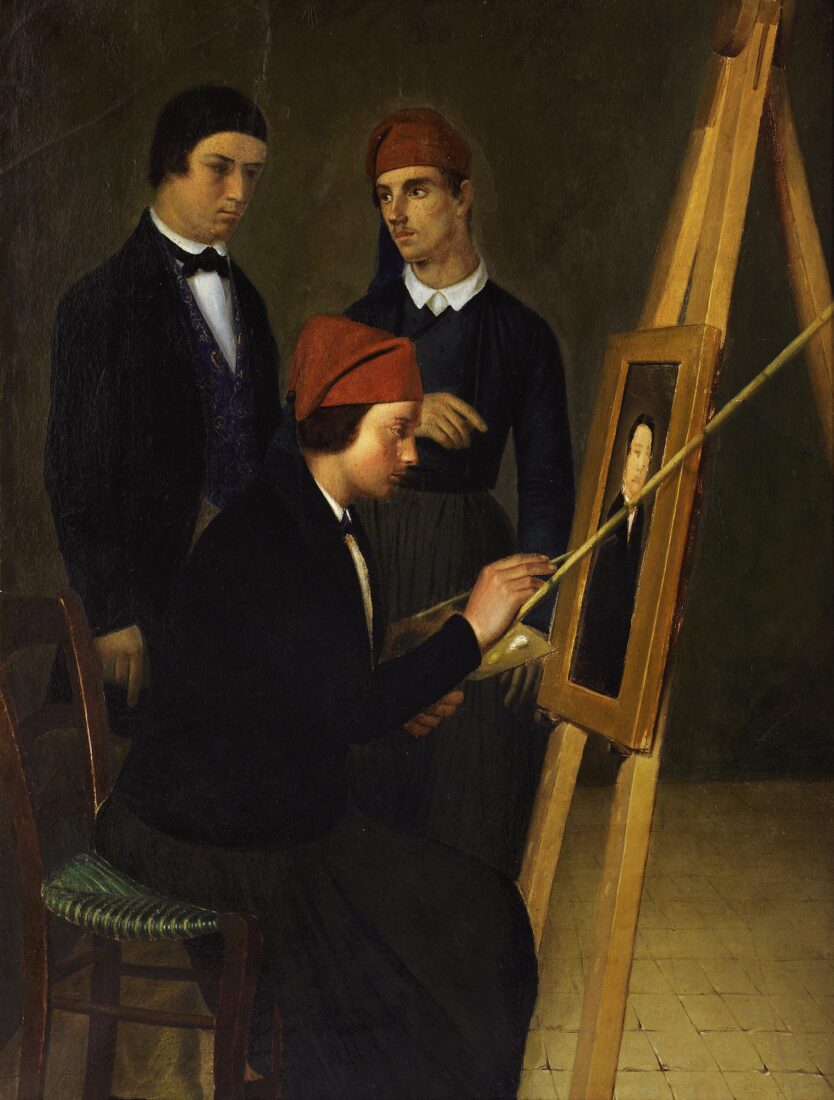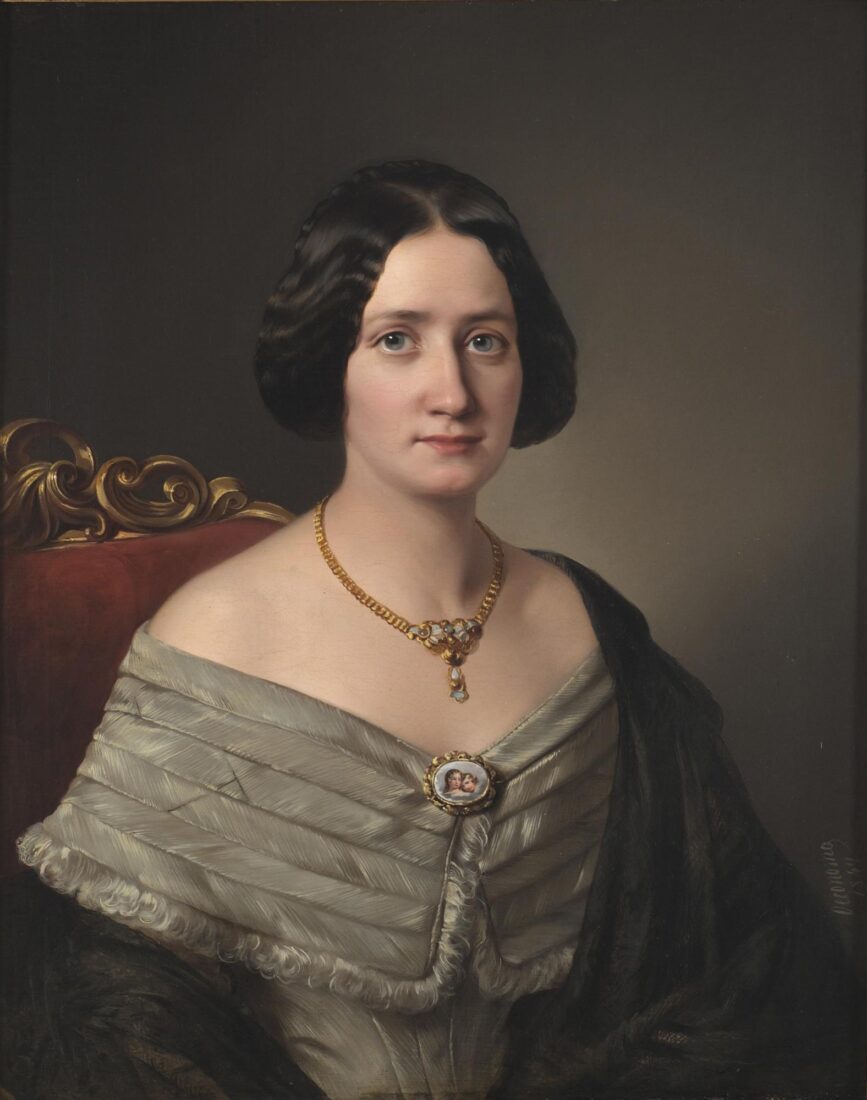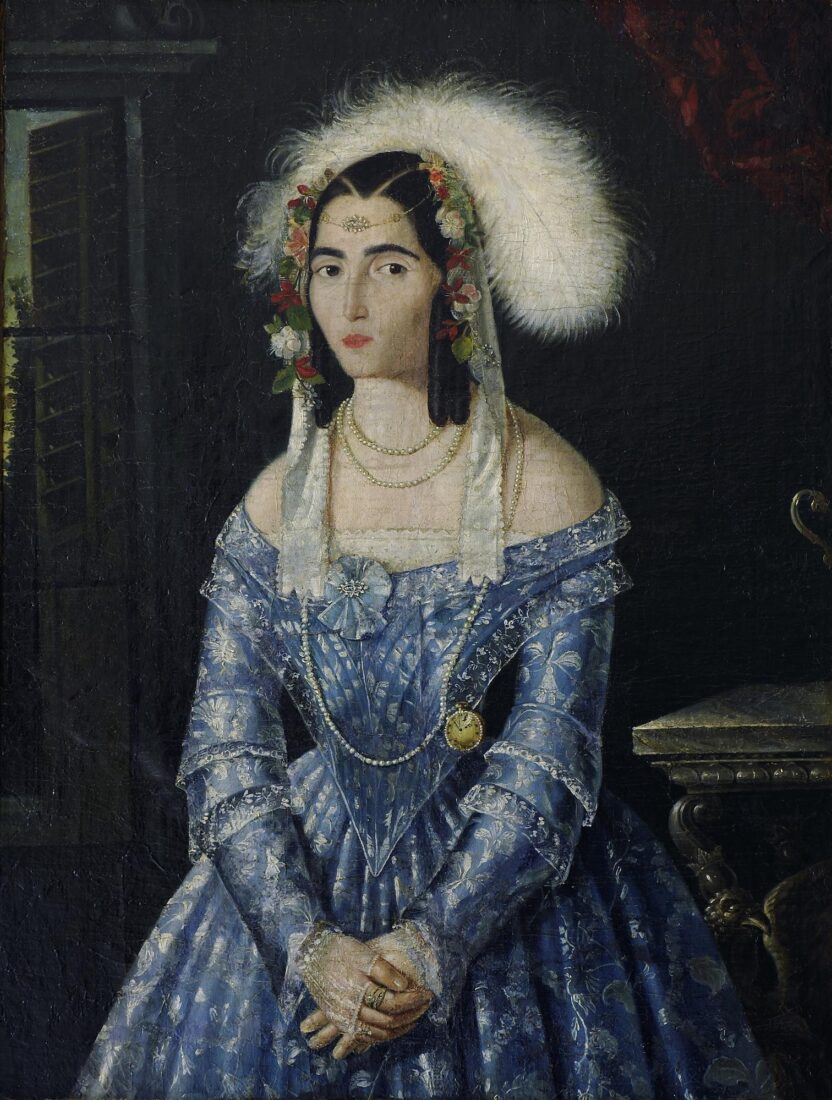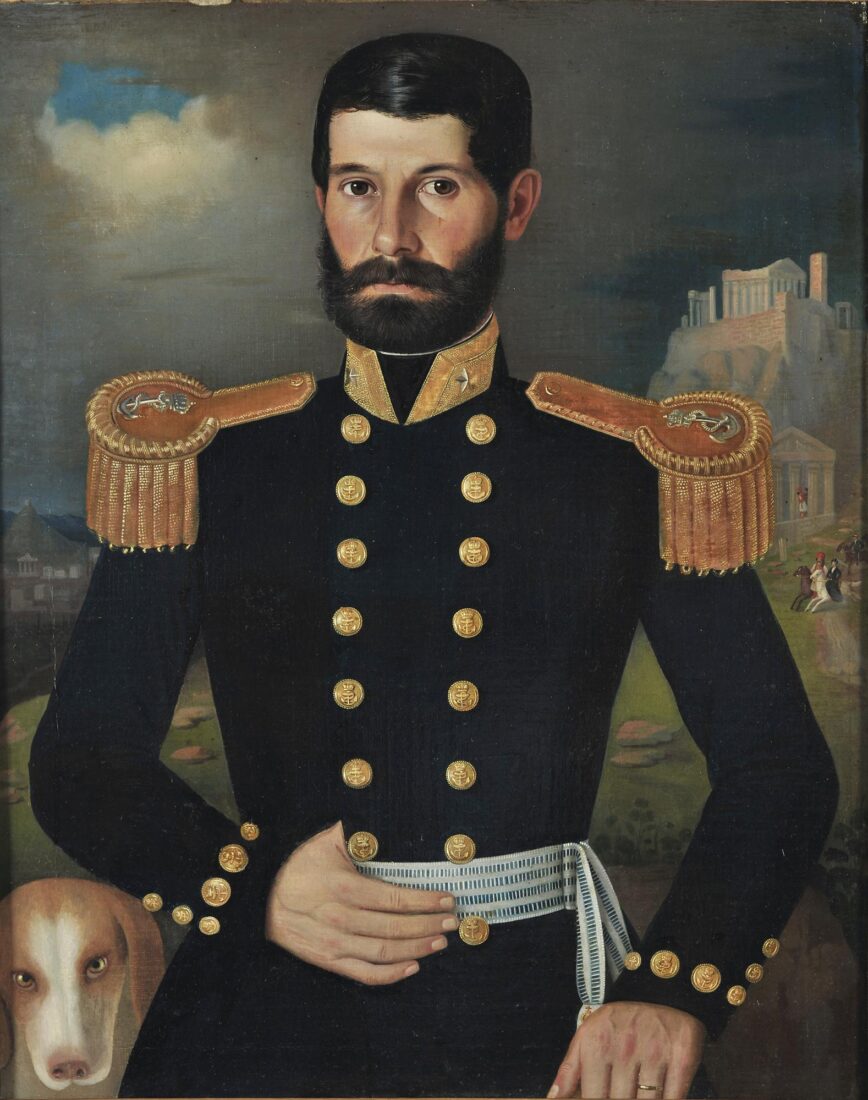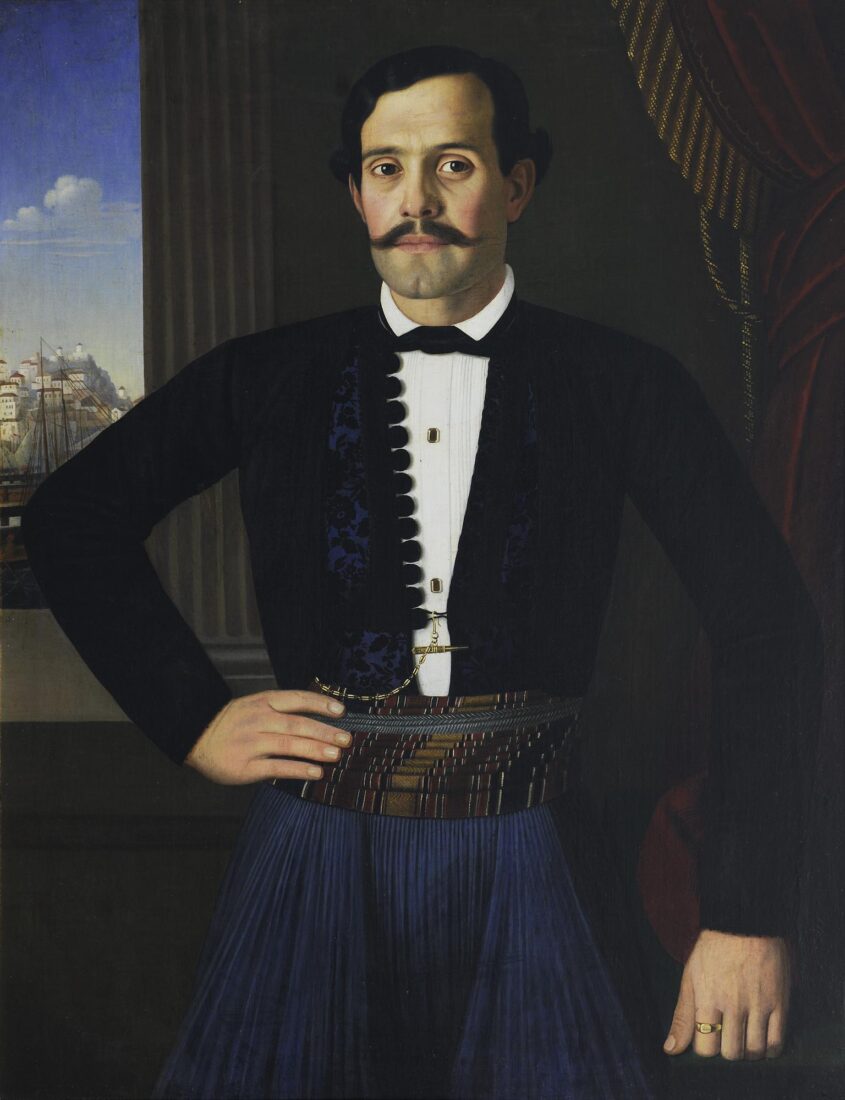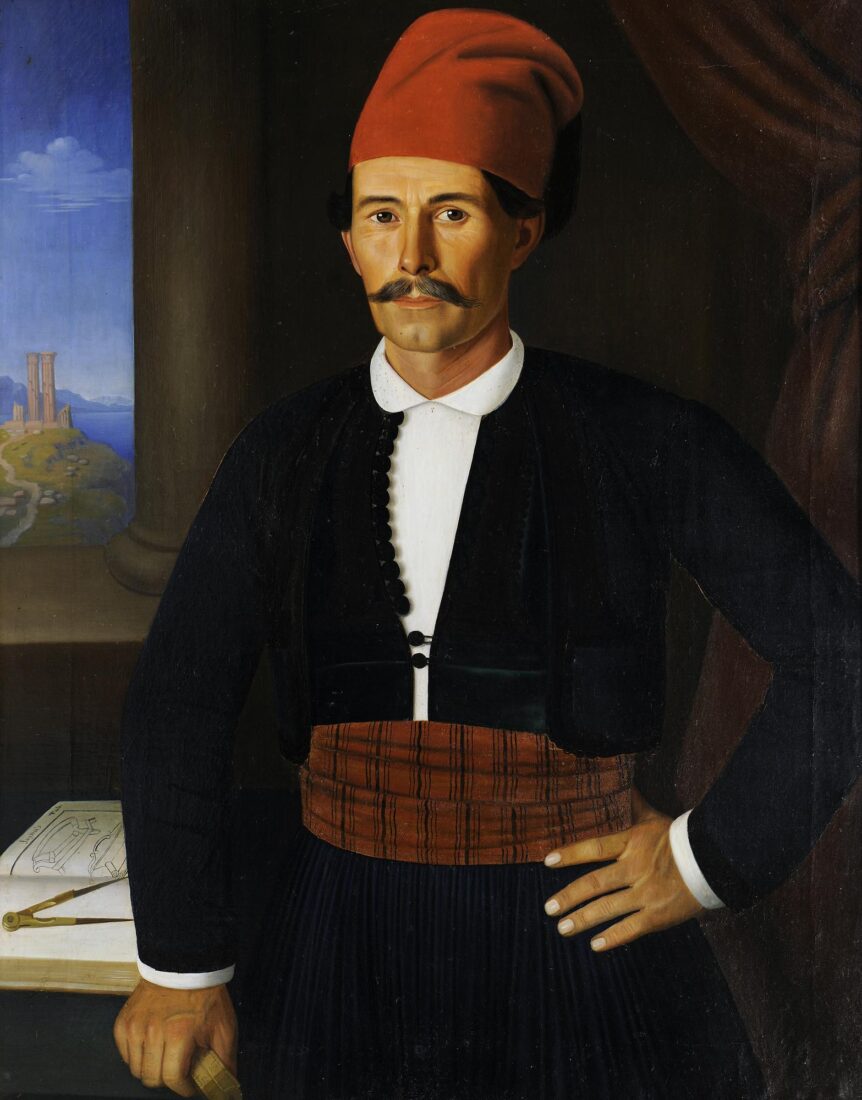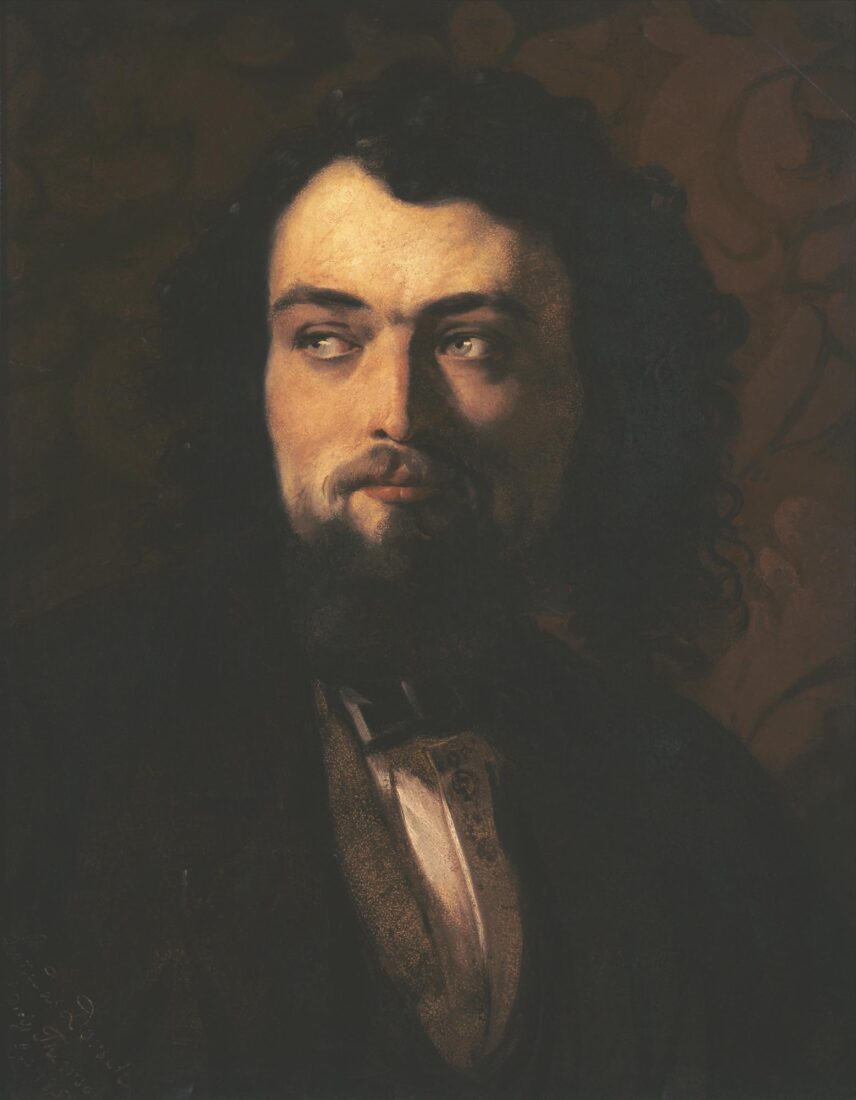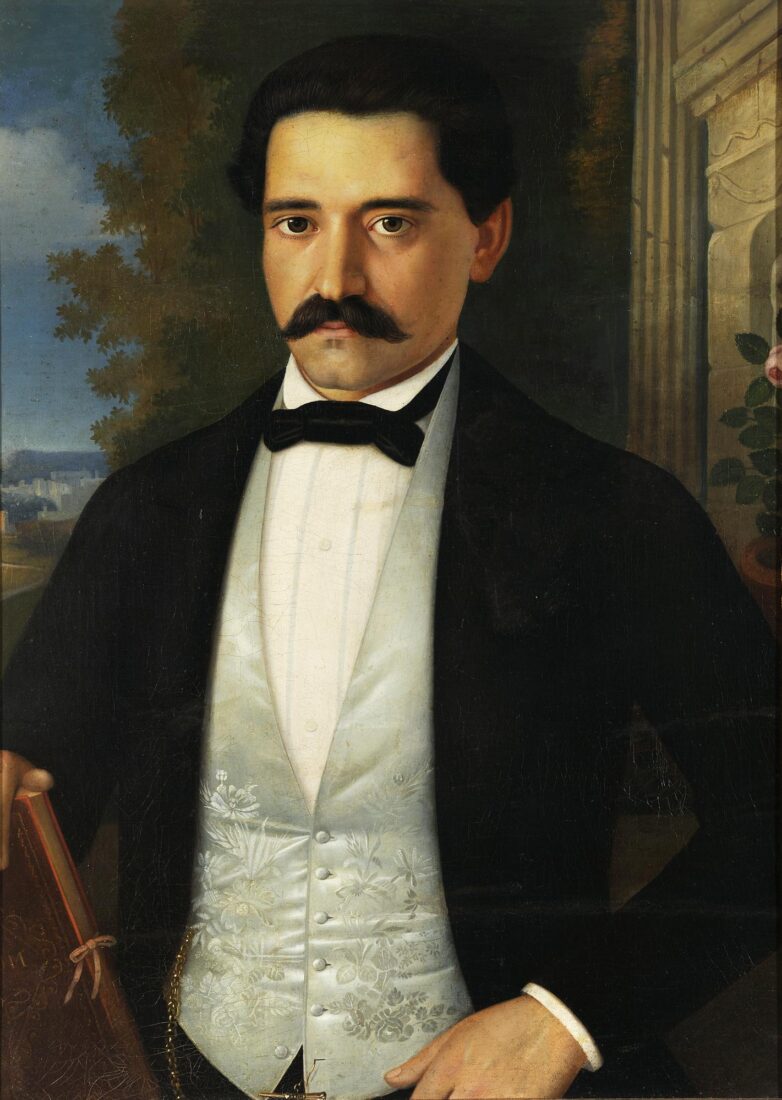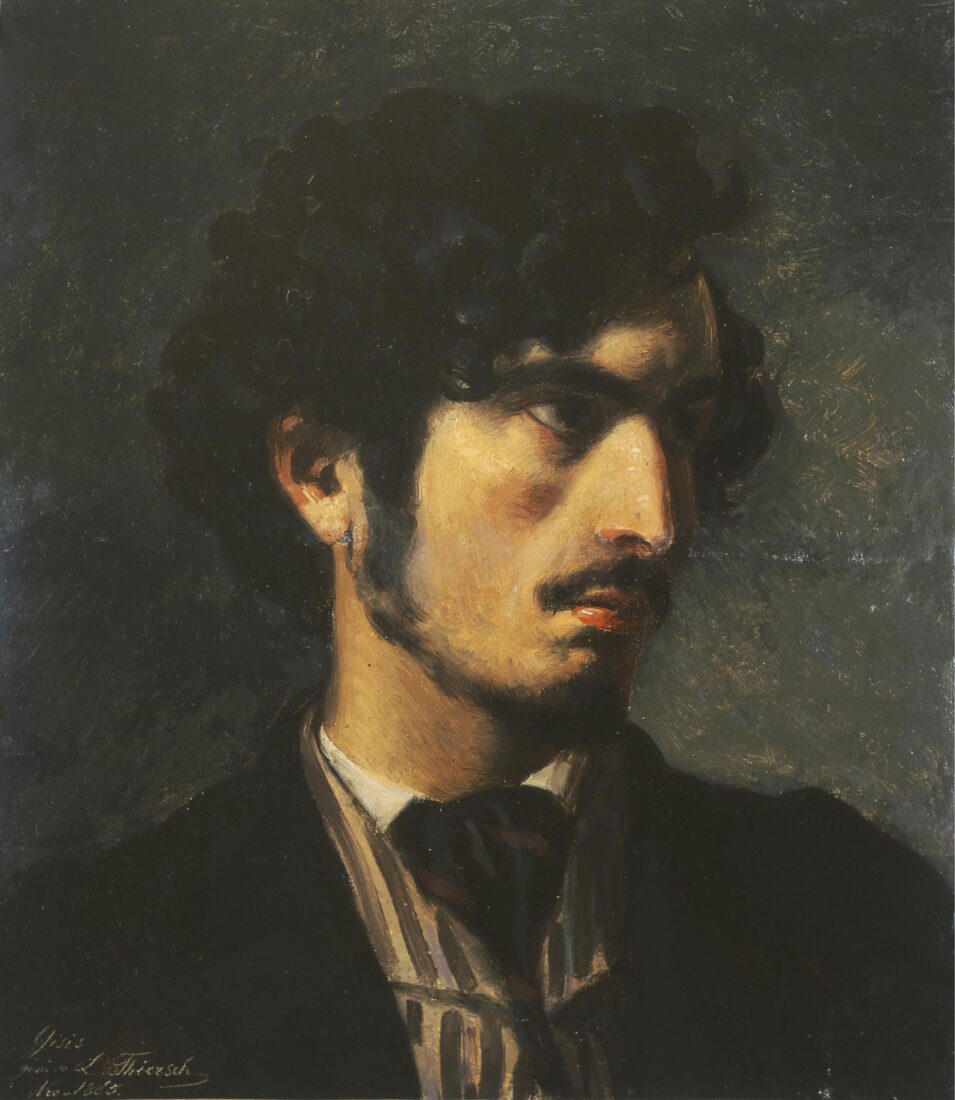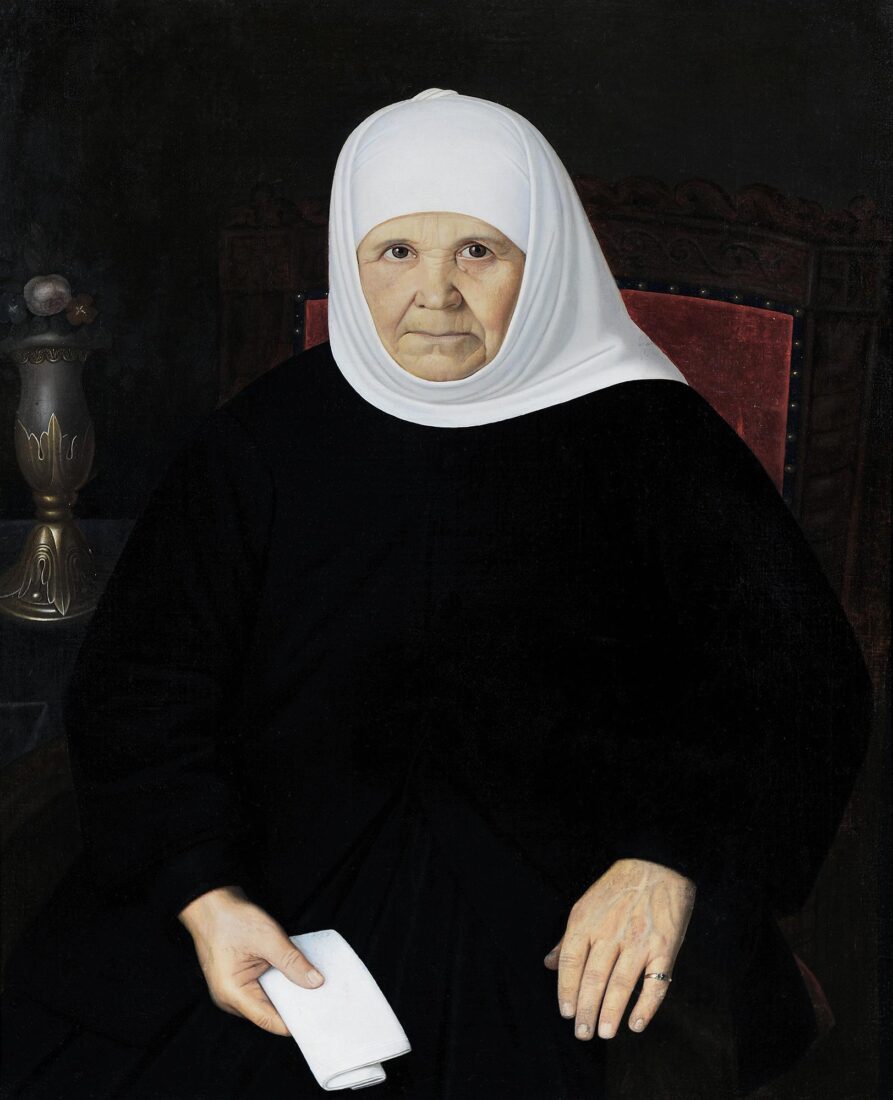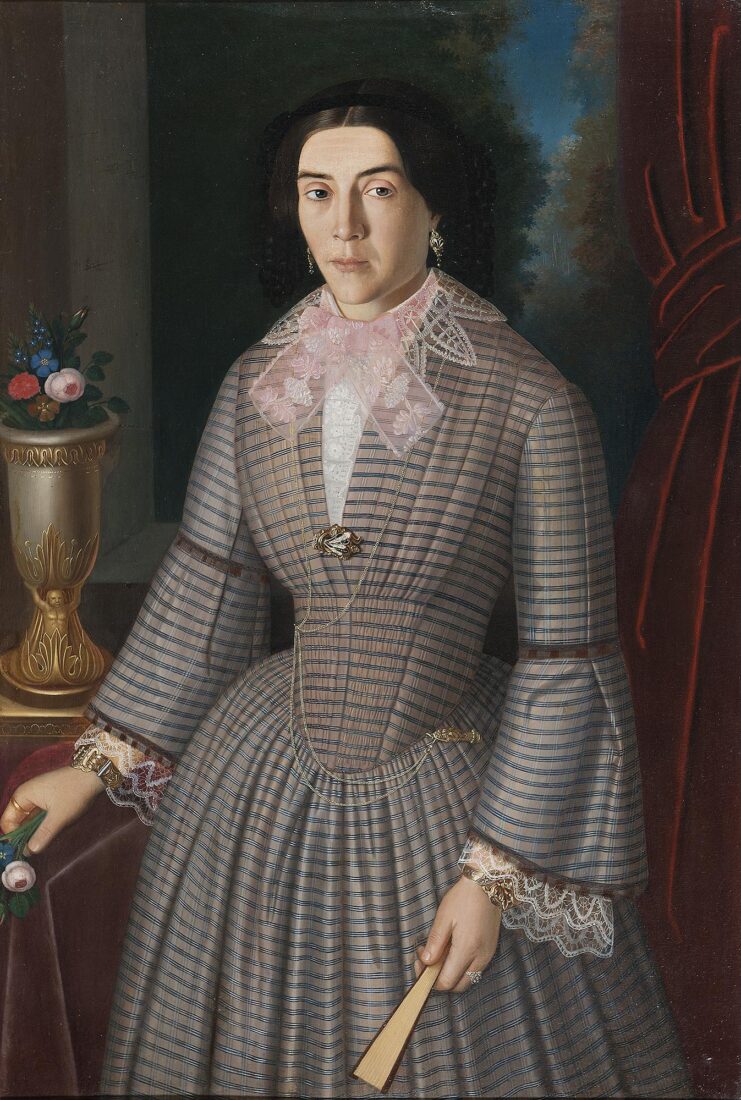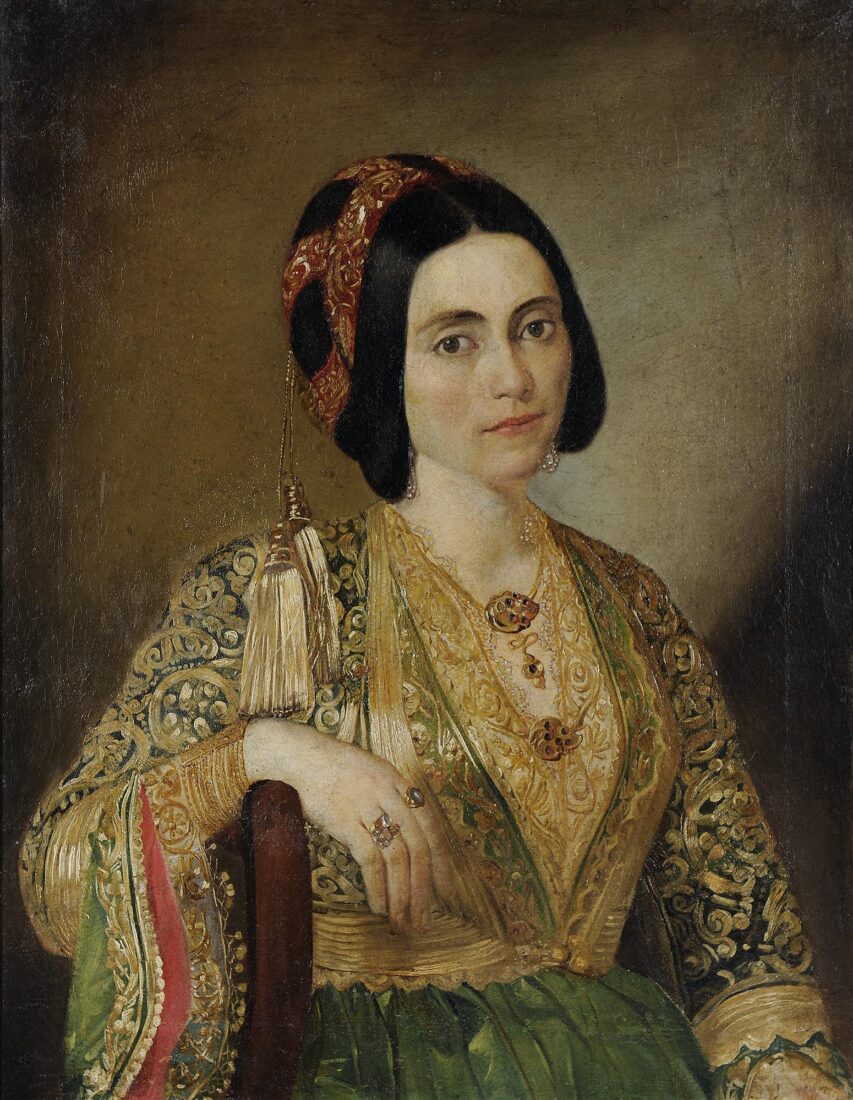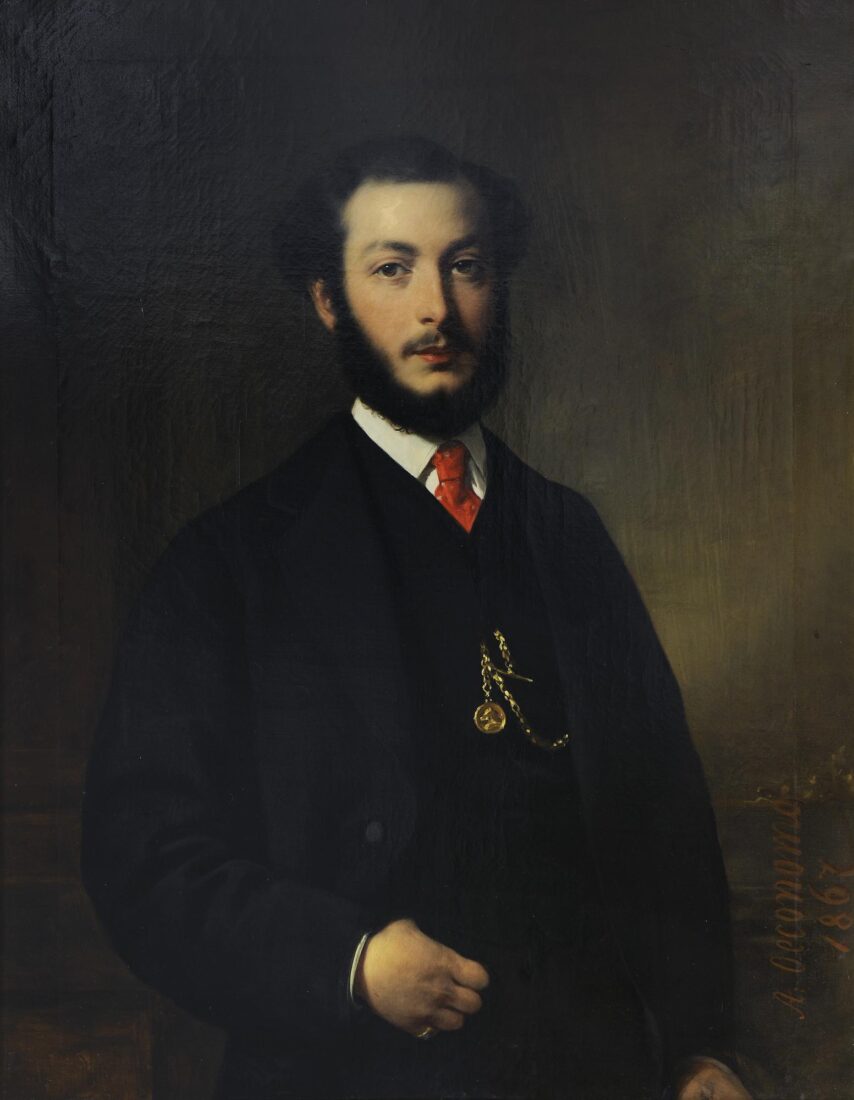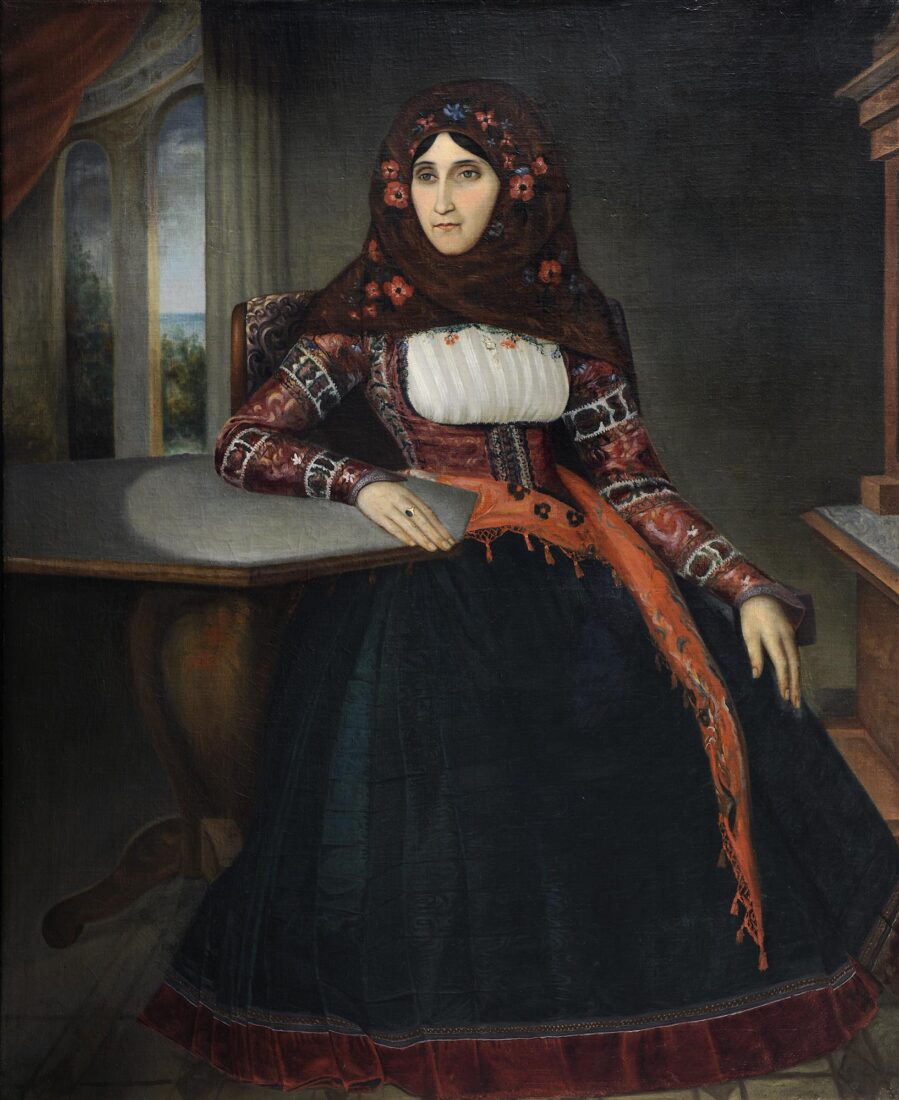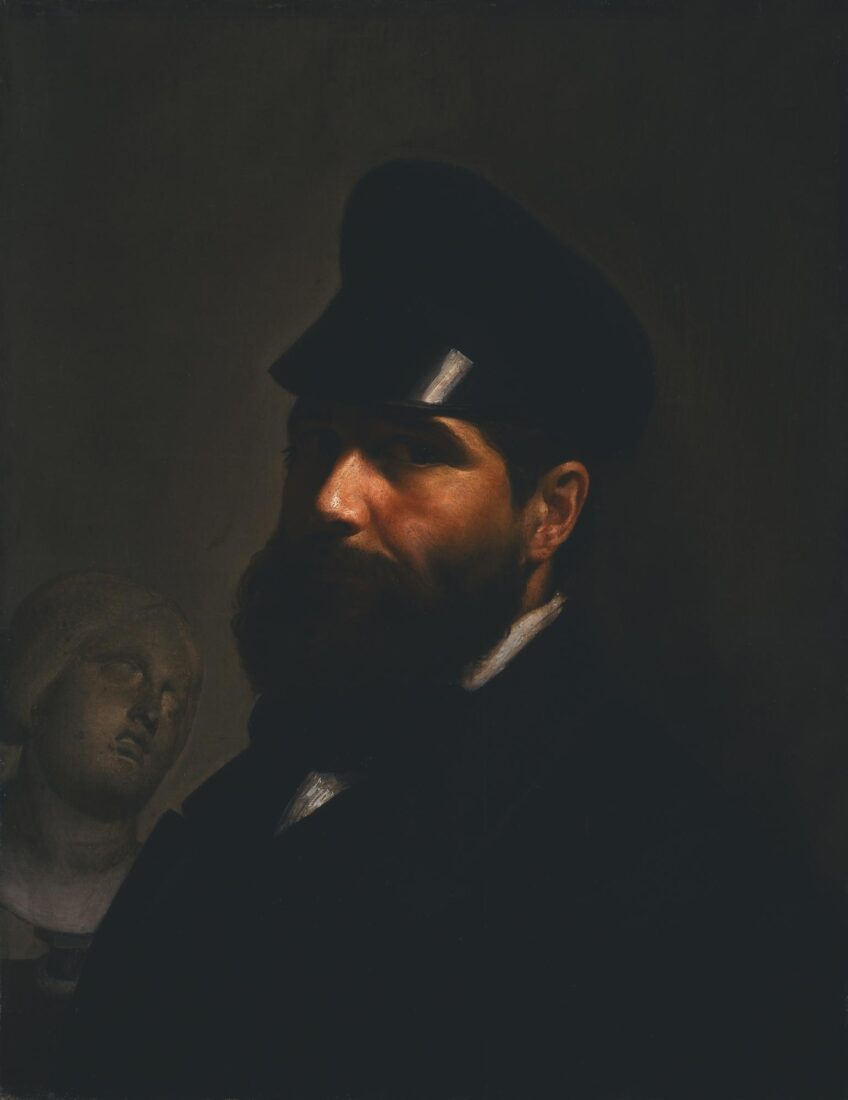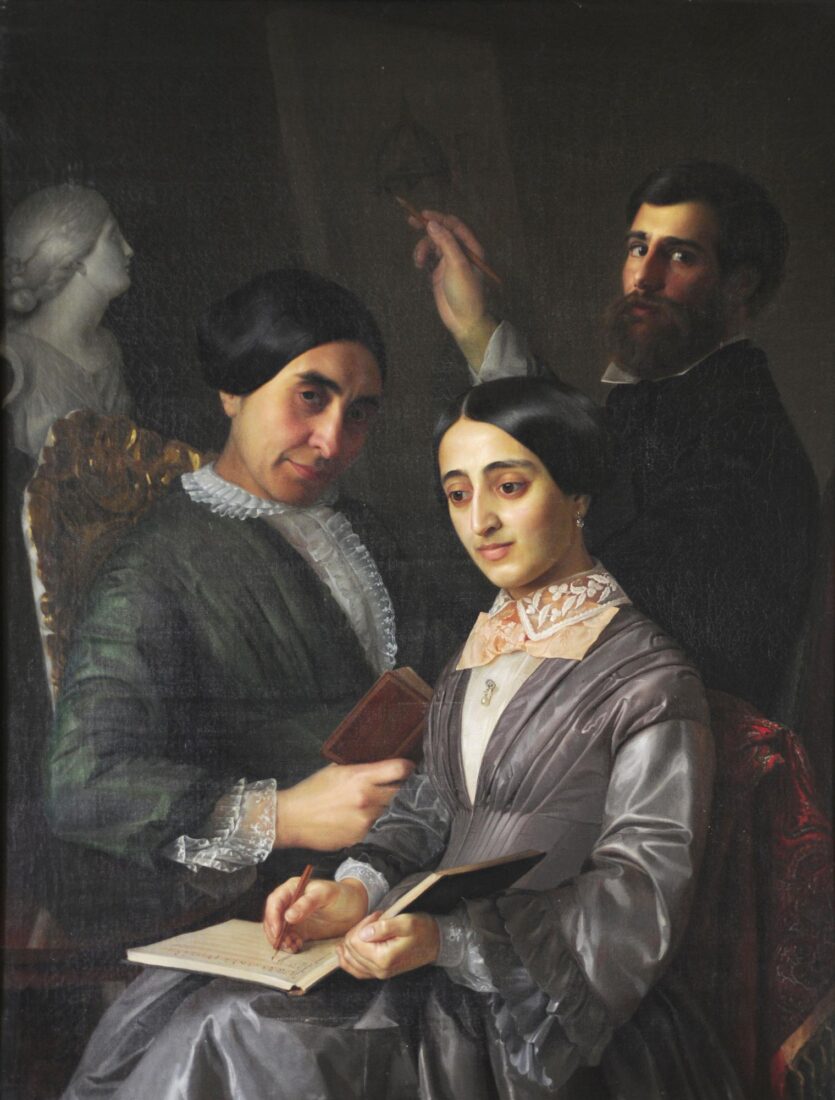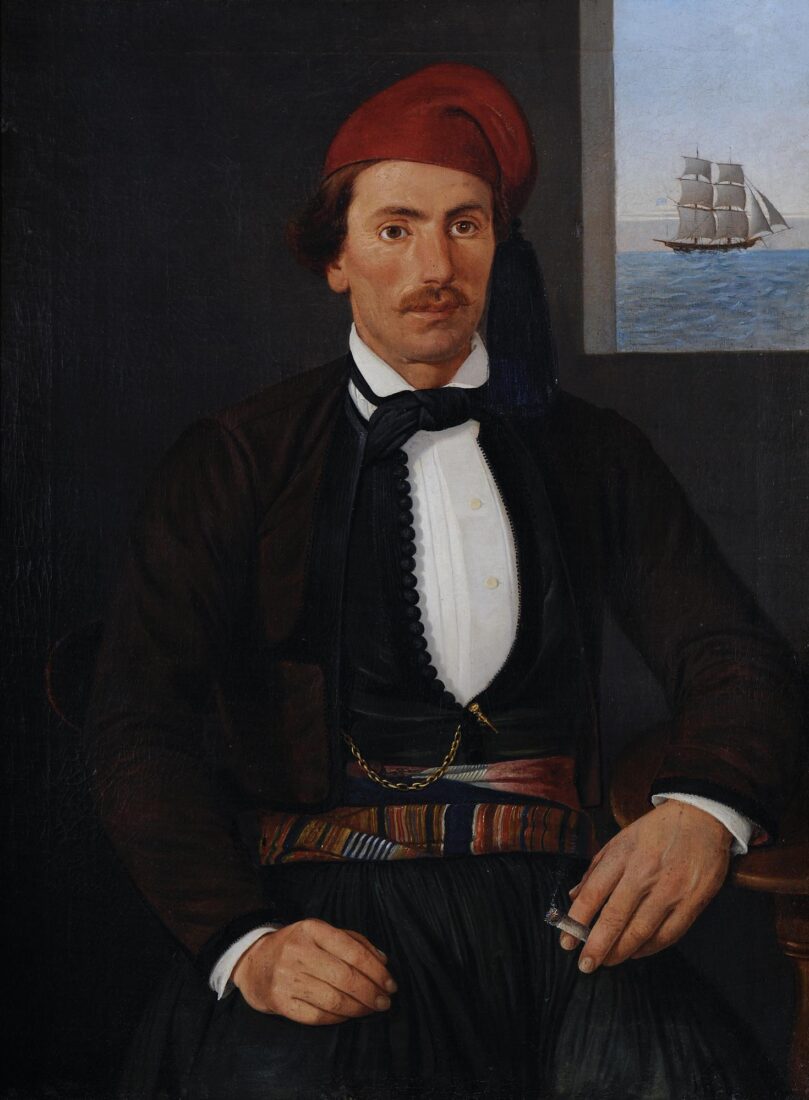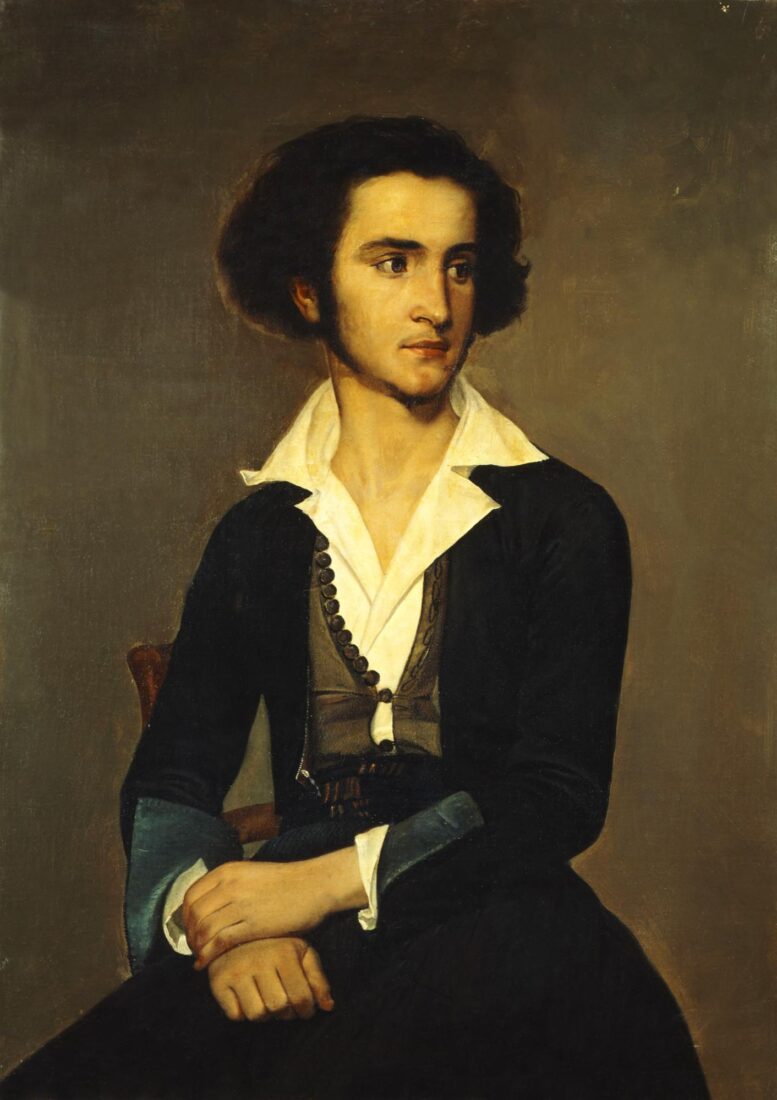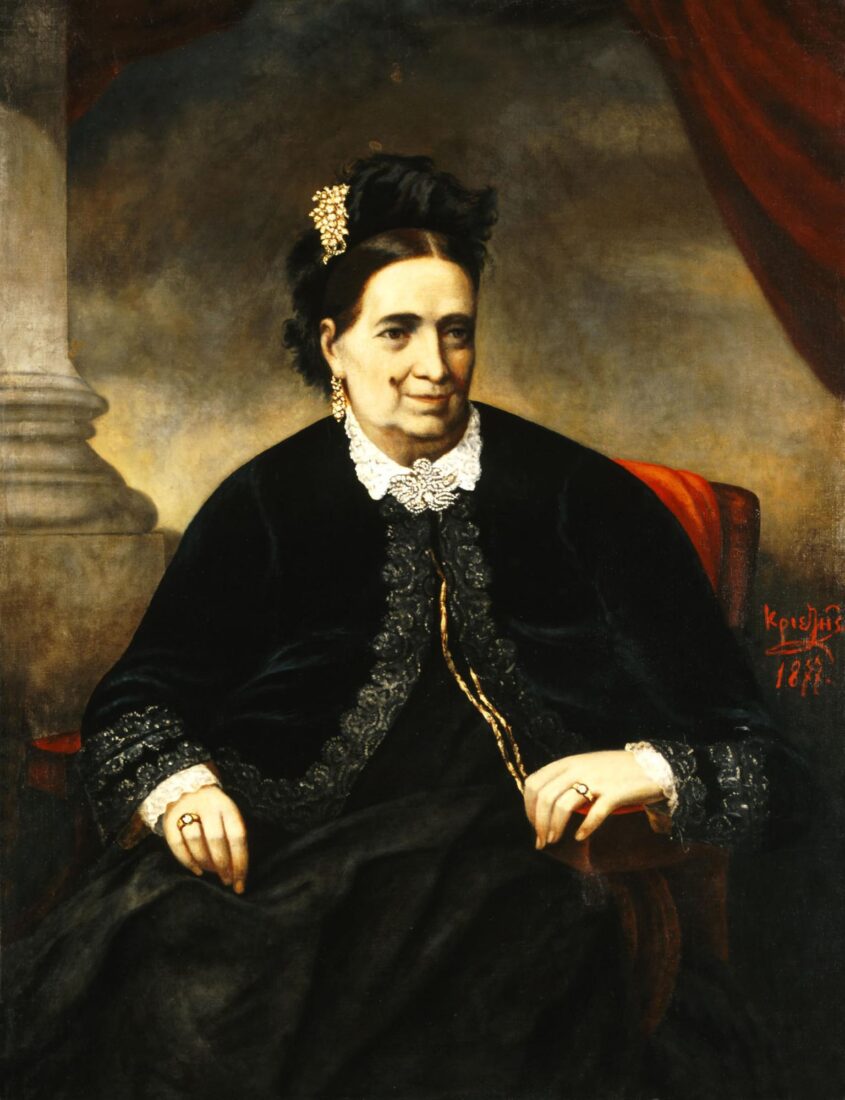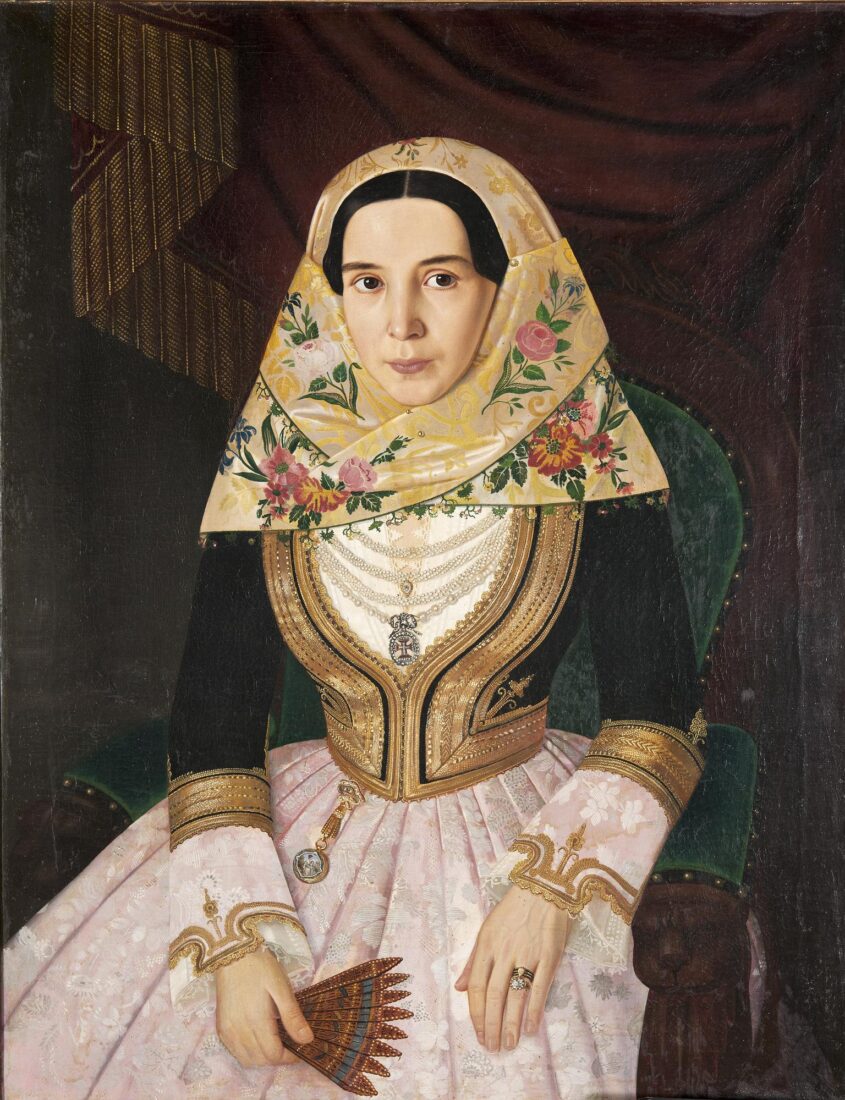The Bavarian artist Ludwig Thiersch was one of the first professors at the School of Arts. His model here is a woman of great personality, Kleoniki Gennadiou, one of the first Greek women painters and sculptors. She is elegantly dressed, holding a book in her left hand, probably a book of poetry, a detail suggesting that she was an educated, scholarly person.
Now for the first time, the figure is placed outdoors: the rock on the right, the sea, an island in the background, the blue sky with orange clouds, all suggest Greece. With her romantic beauty and her dreamy eyes, Kleoniki Gennadiou is a representative example of how a foreign artist envisioned the ideal Greek beauty.
The Cretan artist Nikolaos Kounelakis studied in St Petersburg but lived and worked in Florence, where he was inspired by the great masters of the Renaissance, such as Raffaello, as well as the neoclassicism of his contemporary French artist Ingres, also related to Florence. Both artists, Raffaello and Ingres, sought to capture the ideal figure.
Zoe Kambani was the artist’s fiancee. She is shown putting her engagement ring around her finger, against a solid dark background, her eyes dreamy, as if lost in tender anticipation of love. An opened love letter on the table with the flower vase is the only additional element in the painting. The girl’s comely face, softly modelled, and her plain blue dress underline the classical character of the work.
An appealing as well as seminal work, this painting marks the beginning of Greek portraiture. A painting by an unknown to us artist beckons us to visit a young Greek painter’s studio. He is wearing a characteristic costume of the Greek islands, sitting in front of his easel, adding the finishing touches to a male portrait. The sitter, a youth dressed in occidental clothes with a bow-tie is upright, examining his likeness in the painting. Another young man, probably an apprentice painter, also wearing an island costume and cap, is comparing the sitter and his image in order to evaluate the verisimilitude. These may well be young students of the recently established School of Arts, practicing the new genre of portraiture.
There is an allegory concealed in this family portrait. The painter lived in Florence, where the echo of a literary debate concerning the respective merit of the Liberal and the Fine Arts was still alive: Were the Fine Arts (painting, sculpture, architecture) equal to the noble Liberal Arts? The painter proposed his own answer in this painting, in which the Fine Arts exist side by side with the Liberal Arts. The artist himself becomes the symbol of the art of painting; the dome of the Florence Cathedral, shown depicted in the painting within the painting, suggests architecture, while invoking at the same time the city in which the artist lived. The bust of a classical Muse on the left suggests sculpture. These three fine arts coexist with poetry (symbolised by the small book held by the artist’s mother in law, Euphemia Kambani), while his wife, Zoe Kambani is writing down musical notes, suggesting music. Of excellent arrangement, the composition is inspired by Renaissance models. Gravely suffering from tuberculosis, Zoe Kambani was to perish soon afterwards.
The descendant of a prominent maritime family of Hydra, Kriezis studied painting and engraving in Paris. Like Pige, he blends folk and academic elements in his painting. Unlike him, he uses the brown colour of academic painting and models volume through chiaroscuro.
The captain from Psara is portrayed in a proud frontal pose, looking at the viewer, a lit cigarette in his fingers. He is wearing the traditional costume of his island. Through the open window can be seen a vessel with all sails open. This detail is emblematic of the sitter’s professional occupation as a captain.
A Tyrolean painter working in Greece, Francesco Pige left us the most magnificent gallery of the Greek society in the early years of Independence. The frontal or three-quarter figures are portrayed looking towards the viewer, clad in traditional ethnic costumes and surrounded by elements either decorative or emblematic of their professions and social positions.
Kyriakoula Voulgari was the wife of Antonios Kriezis, who rose to political offices of the highest rank. She was member of Queen Amalia’s entourage. One of her jewels, carrying the royal emblems, reminds us of the fact.
Pige’s style is distinguished by his accurate depiction of faces and hands. An accuracy and clarity reminiscent of 15th century Flemish portraits, or those of the great French neoclassical painter Ingres. In capturing decorative details, though, such as embroidery, jewellery, in all their detail, Pige reminds us of naive, non-academic painters. He often forgets volume and perspective. Note how the flowers on Kyriakoula Voulgari’s scarf are rendered.
Another of Pige’s characteristic traits is that he does not use the brown colour, contrary to academic painters. To this he owes his clear and lucid colours.
